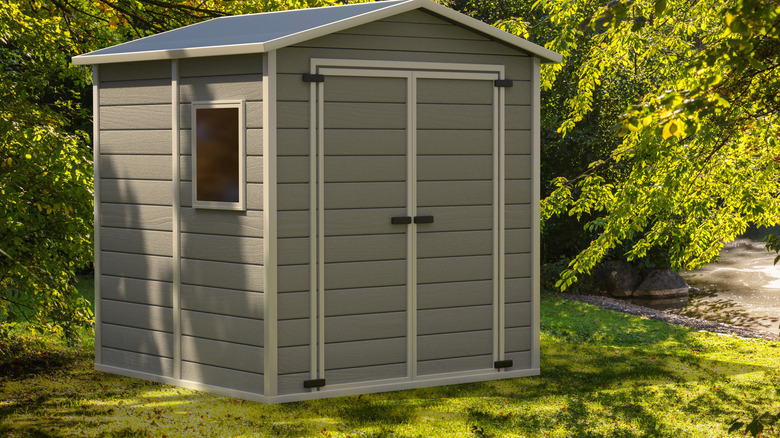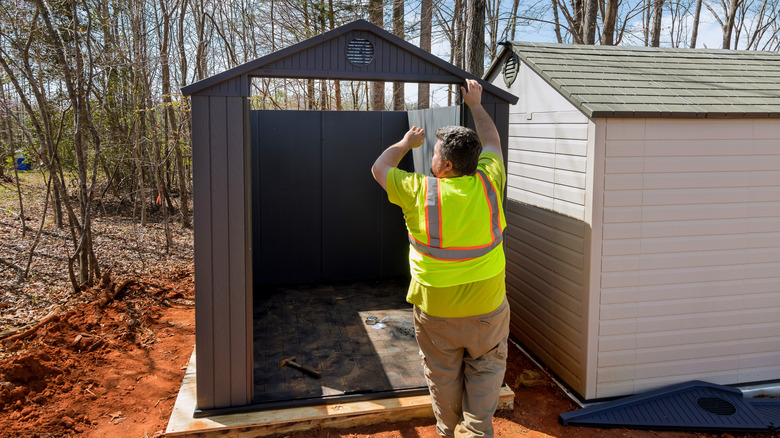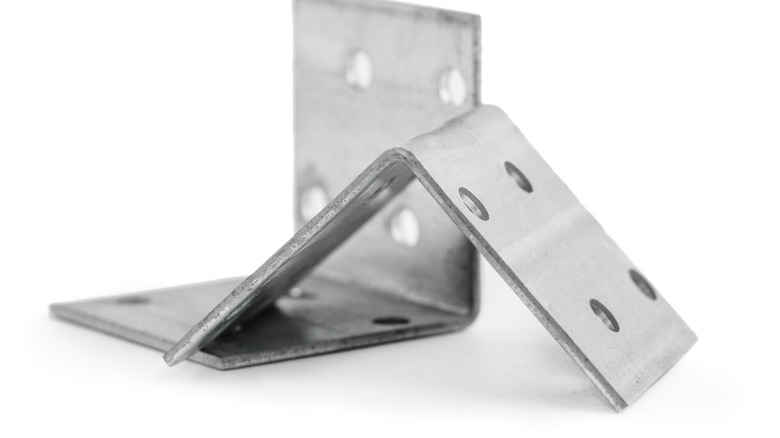How To Anchor A Resin Storage Shed Without Concrete
Resin is one of the most durable materials for a backyard storage shed. Resin sheds are portable, weather- and insect-resistant, simple to install, and generally cost less than their wooden counterparts. However, they must be anchored to the base. And if you have a nice, concrete foundation, then anchoring them is very straightforward. All you have to do is pre-drill holes through the anchor points and install concrete bolts with masonry anchors into the holes. But what if you don't need a foundation for your storage shed and decide to place it right onto gravel or a soil substrate, with no concrete to facilitate simple anchoring? You'll be relieved to know that with a few innovative tricks and some specialized gear, you can still securely anchor your resin shed to a non-concrete substrate.
Some common methods for fastening sheds to the soil involve the use of cables with bullet, arrowhead, or penetrator anchors. These methods can get problematic with resin sheds, since these only come with a plastic floor, denying you exterior anchor points for fastening the cables to the shed. Below, we'll walk you through several ways of getting around this issue, so you can get your new resin shed anchored to the ground in no time.
Use a cable and anchors to secure the resin shed to the ground
If you don't have a concrete foundation, several types of anchors will let you fasten the structure to the ground using cables. In this configuration, one end of the cable attaches to the shed, and the other gets secured in the ground with various anchor types. Affixing the cable to a plastic shed can be troublesome if there are no foundation runners under it and it sits on the ground or gravel. One ingenious solution is to get a long cable and run from one side of the shed to the other in the space between the shed's roof and the beam. This way, you can anchor both ends of the cable to ground on opposite sides of the shed.
If using arrowhead or bullet anchors, you'll have to attach them to the cable with a thimble loop after you've fed the cable through the roof beam. Then drive the anchors into the ground with a rod and a sledgehammer (or other large hammer type) to a depth of at least 2 feet. After pulling the rod out, give the cable a good pull to lock the anchor in place.
Penetrating anchors are another option to consider instead of bullet or arrowhead anchors. These anchors look like giant screws, and come as long as 46 inches. Once you've threaded these anchors through the thimble loops at the cable's ends, drive them into the ground with an impact wrench.
Use penetrating L-brackets
Do you think that running cables through the shed's roof beams is too much trouble? We don't blame you. But luckily, there is another way you can anchor a resin shed to the ground, and it involves the same penetrators we discussed above. Instead of using cables, this method relies on L-brackets to fasten the shed to the anchors. One side of the L-bracket attaches to the shed's wall, while the other gets held down to the ground by the anchor.
If you're opting for the L-bracket method, start by choosing the right bracket type. For one, since the bracket is exposed to the elements, it needs to resist moisture-induced corrosion. Secondly, you'll want the bracket to have a large enough hole to fit the penetrating anchor, which can be quite wide. A good example of a suitable L-bracket is this PE46-L90 model from American Earth Anchors. It's made of powder-coated steel, which stands up well against moisture. It's also designed specifically to handle large penetrators, like this one also sold by American Earth Anchors.
With the right penetrators and brackets assembled, go ahead and attach the brackets to the corners of the shed. Next, drive the penetrators into the ground through the hole in the L-bracket using an impact wrench. If you suspect that the soil may be rocky, or that there are tree roots or other obstacles in the soil, pre-drill the holes before inserting the penetrators.


